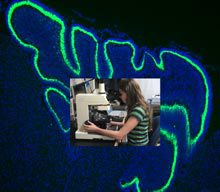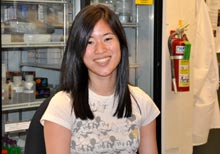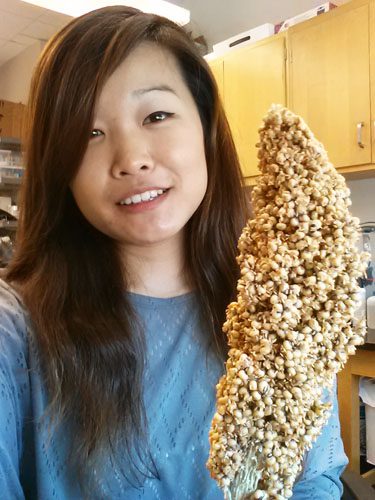Derek Moriyama

My research is looking into the effects of chemical modification of the skeletal muscle protein troponin I. The troponin complex is composed of three subunits (troponin I, C, and T) that combine to regulate the strength of skeletal muscle contraction. Past research has shown that modification of troponin I by specific enzymes can increase the amount of force heart muscles produce. My project will focus on the effects of such enzymes in skeletal muscles. Because the structure of troponin I in skeletal muscle varies slightly from the structure found in […]
Punam Bhullar
Julia Selezneva
The core goal is to identify the origin of antibiotic drug-resistance determinants, with the hypothesis that drug-resistance determinants, in particular integrons carrying gene cassettes coding for drug resistance, from bacteria that is ingested through uncooked food (spinach, animal meat) can horizontally transfer to commensal bacteria in the human intestine, and under selective pressure of antibiotics, and ultimately lead to complicated multi-drug resistant bloodstream or urinary tract infections. Integrons are mobile genetic elements, found on transposons, plasmids and chromosomes that capture and express gene cassettes by site-specific recombination. This summer I […]
Joshua Kane

My research fuses the disciplines of genomics and phylogenetics in order to characterize the evolution of large gene arrays. My research focuses on an eighty-one member pre-tRNA gene array located on chromosome one of Arabidopsis thaliana. The array itself is subdivided into twenty-seven triplet gene units, each triplet consisting of a single pre-tRNASer gene and two pre-tRNATyr genes, respectively. Using genomic data, such as syntenic analysis with outgroup species, and phylogenetic reconstruction of the evolutionary history of the genes in the array, my research aims to elucidate the history of […]
Alix Mary Lacoste

Growth factors are not traditionally known to play a role in cell migration. However, preliminary data suggest that insulin-like growth factor (Igf) functions in the guidance of granule cells within the cerebellum. The cerebellum is an important structure, responsible for the fine control of balance and movement and also involved in motor learning and memory. The cerebellar granule cell is the most abundant neuron in the brain, and investigating its development and wiring could provide insights into the functioning of the cerebellum and into diseases that affect its function. Using […]
Eric Pang

This summer I will be researching the interaction between Transmembrane AMPA-receptor regulatory proteins (TARPS) and AMPA glutamate receptors at the single molecule level. In order to do this I will have to make constructs containing fluorescent proteins paired with various members of the TARP family and AMPA glutamate receptor family. The interaction between TARPs and AMPA receptors particularly interesting because TARPs play a critical role in the regulation of synaptic AMPA receptor trafficing. While TARPs are not the only protein involved in this regulation it is believed that the regulation […]
Connie Wang

My research project is designed to tease apart the contribution of circadian irregularities on reproductive performance. Circadian rhythms are essential for the maintenance of ~24 hour cycles in behavior, physiology, and neural function required for normal health. In humans, chronic or acute loss of synchrony between the circadian clock in the brain and the environment through shift work, jet lag, poor sleep hygiene, etc., leads to numerous health problems. Of great concern, many studies show that disruptions in circadian function lead to infertility, spontaneous abortion, and low birth weight in […]
Nicole Christiane Swann
Karina Sakanaka
Cognitive control is the mechanism of coordinating actions with internal goals. I am primarily interested in the role of cognitive control in decision-making, particularly how internal states such as economic preferences can influence decision-making under probabilistic outcomes. Individuals differ in their tolerance for the amount of uncertainty in decision-making, and behavioral economic models, such as expected utility functions can create parameters that capture preference or aversion for risk and ambiguity. Using the choice history of each subject between pairs of gambles, my project will investigate how economic preference parameters may […]
Stephanie Byun

Sorghum is an important staple crop in the semi-arid tropics of Asia and Africa as it feeds millions of the poorest people in these regions. It provides some degree of nutritional content for humans, but is considered an inferior grain because of its significantly lowered protein digestion. Since sorghum is being consumed in populations where undernourishment is of concern, it is extremely important to consider the accessibility of its nutritional content.